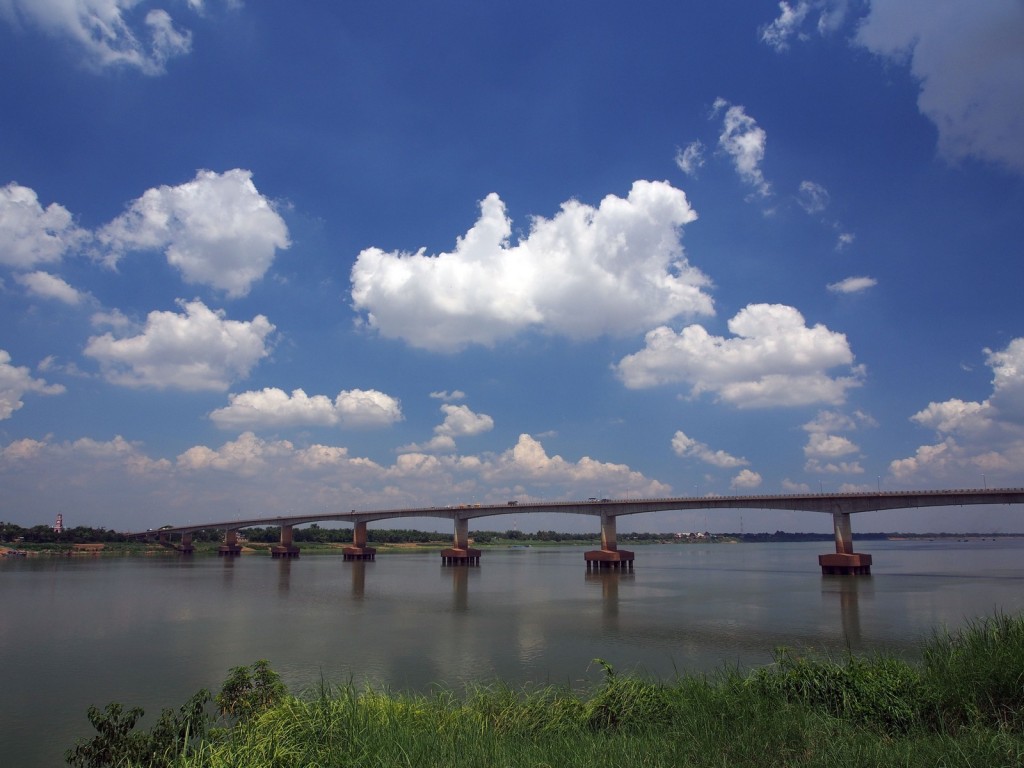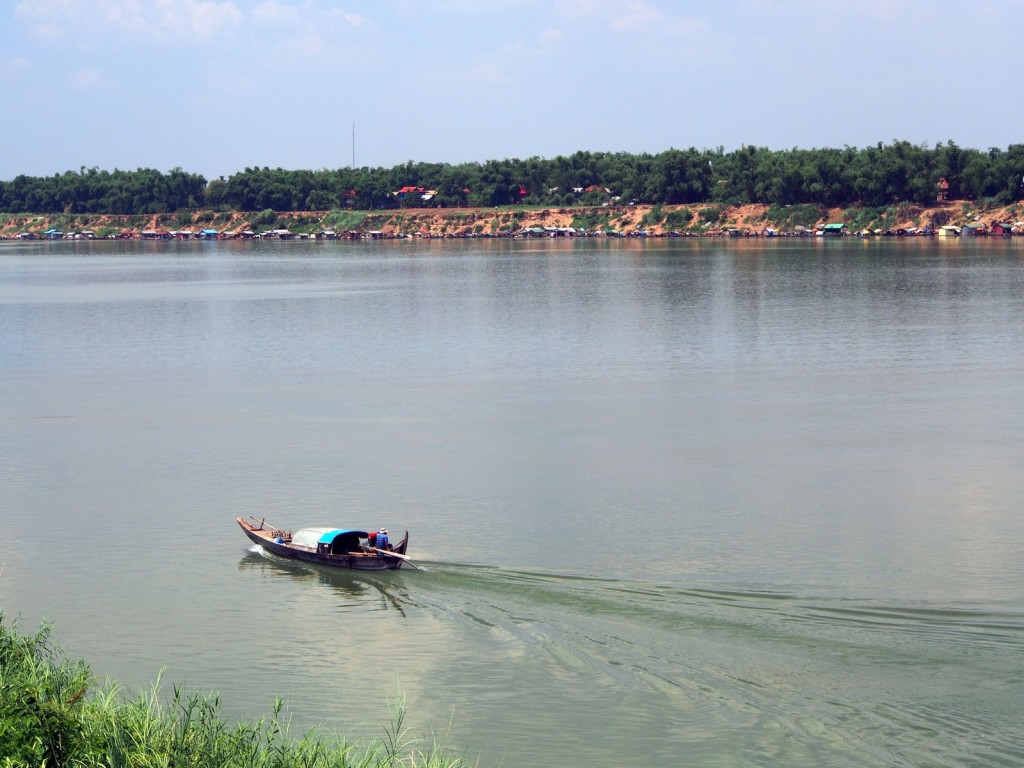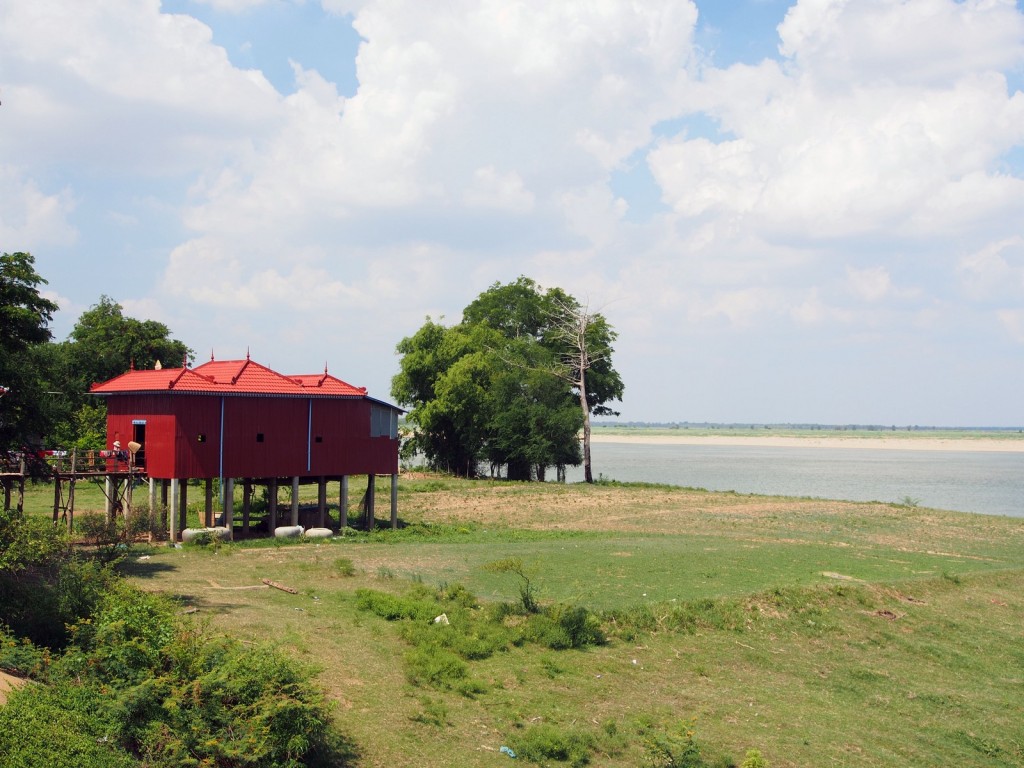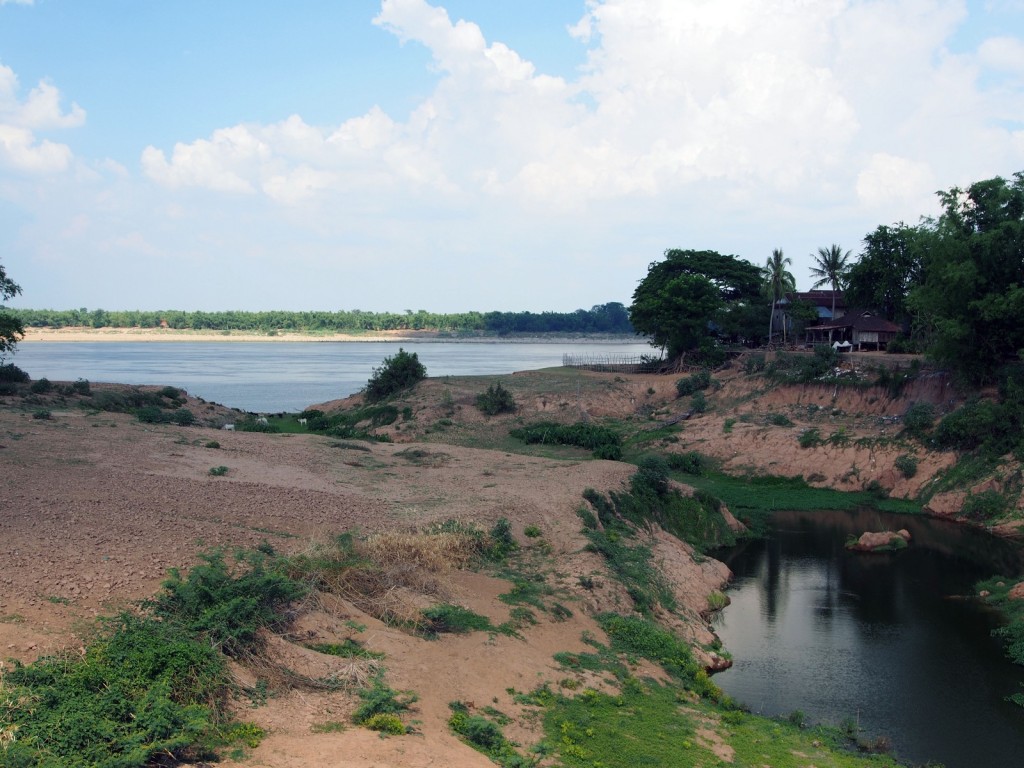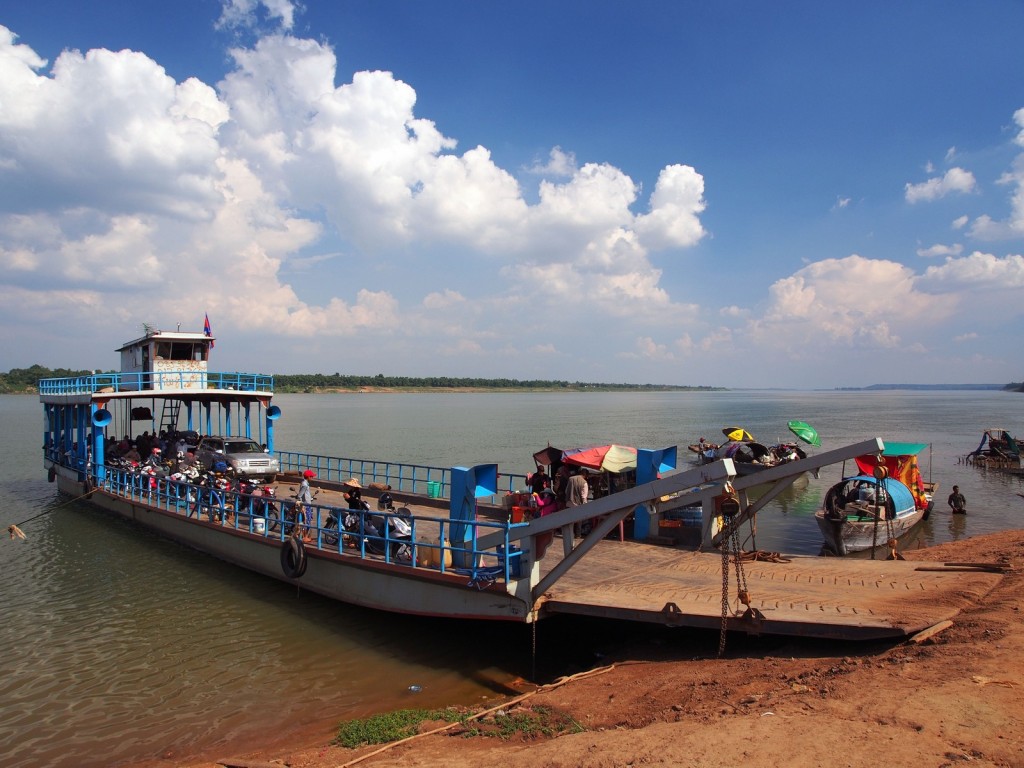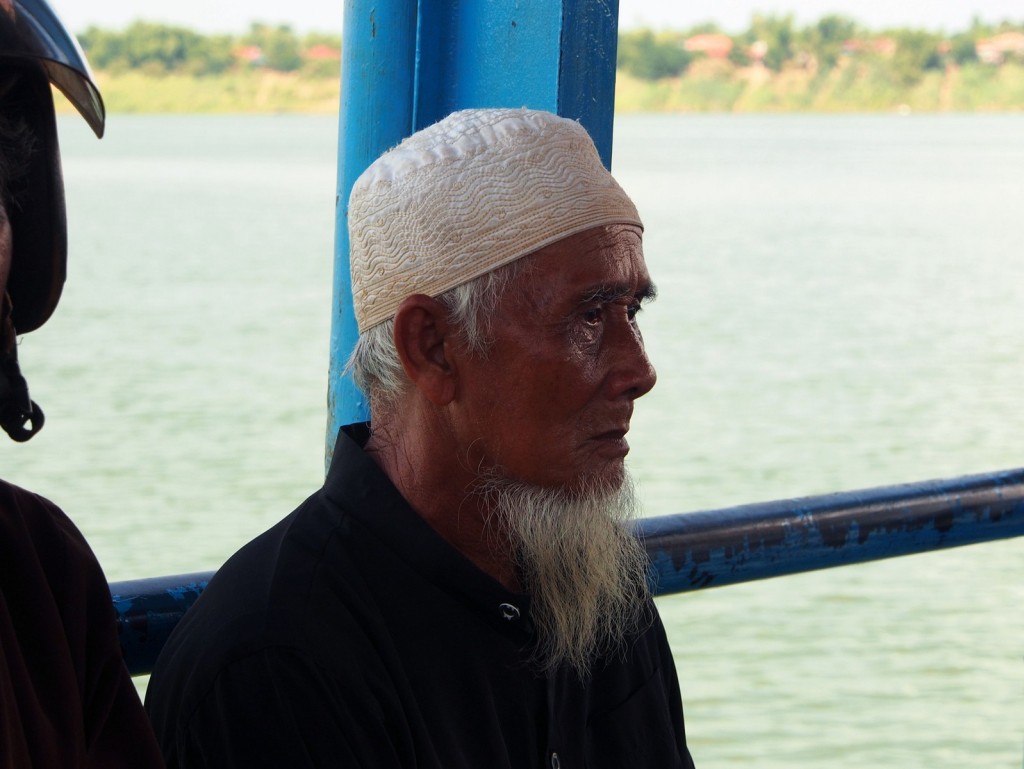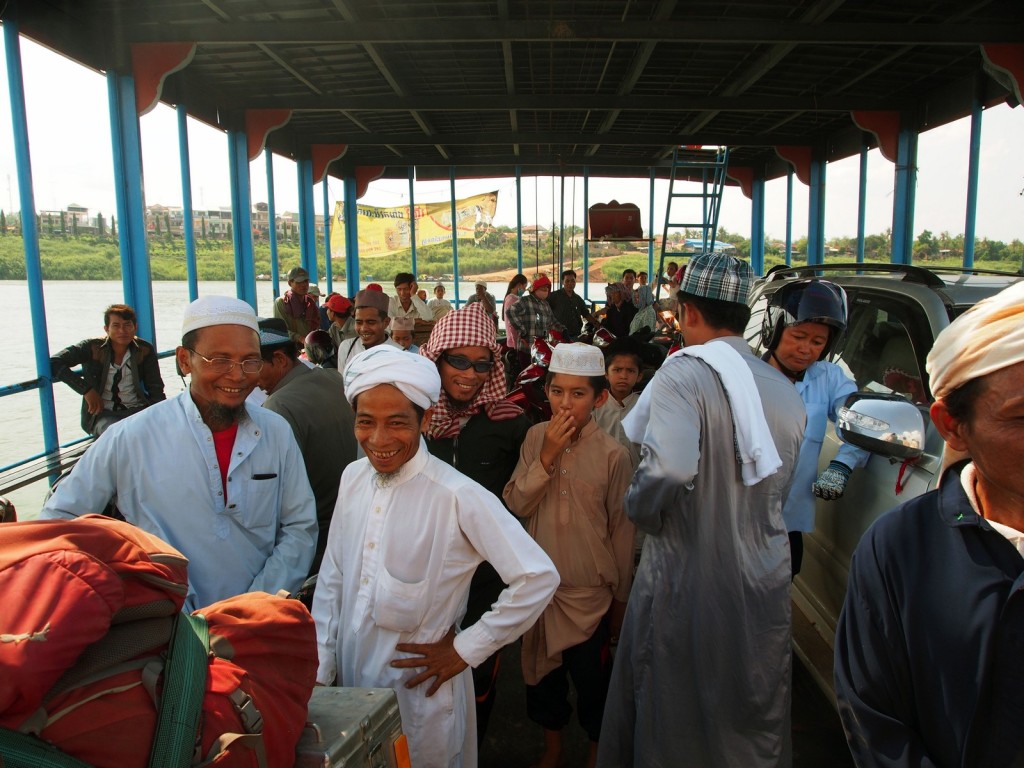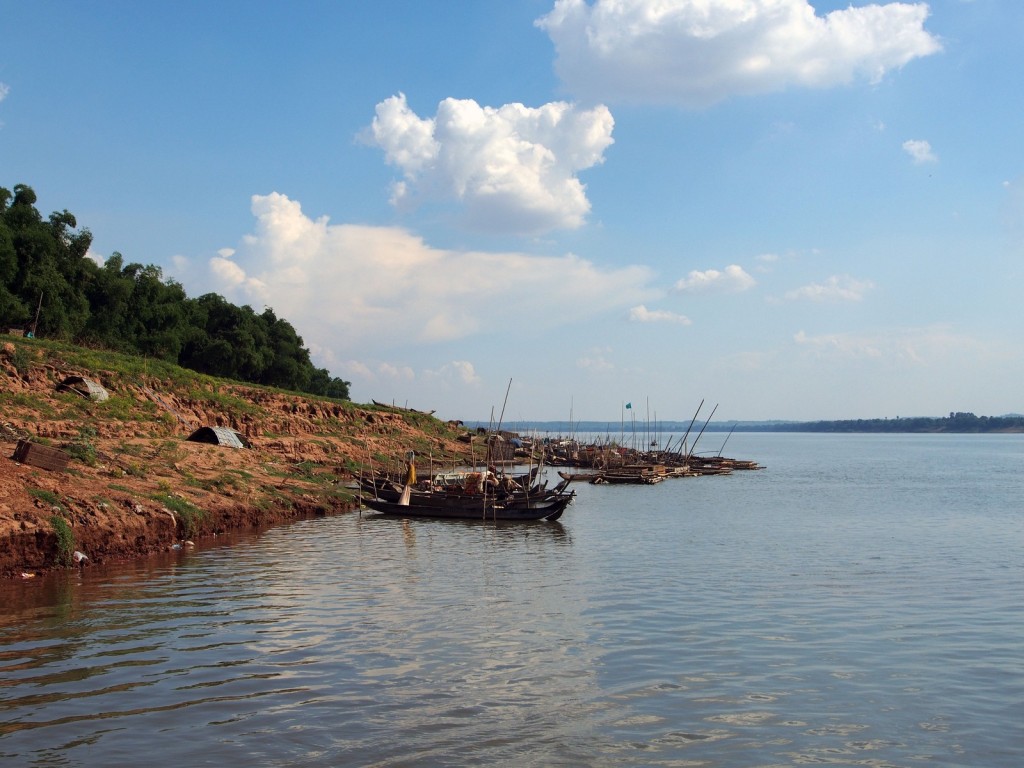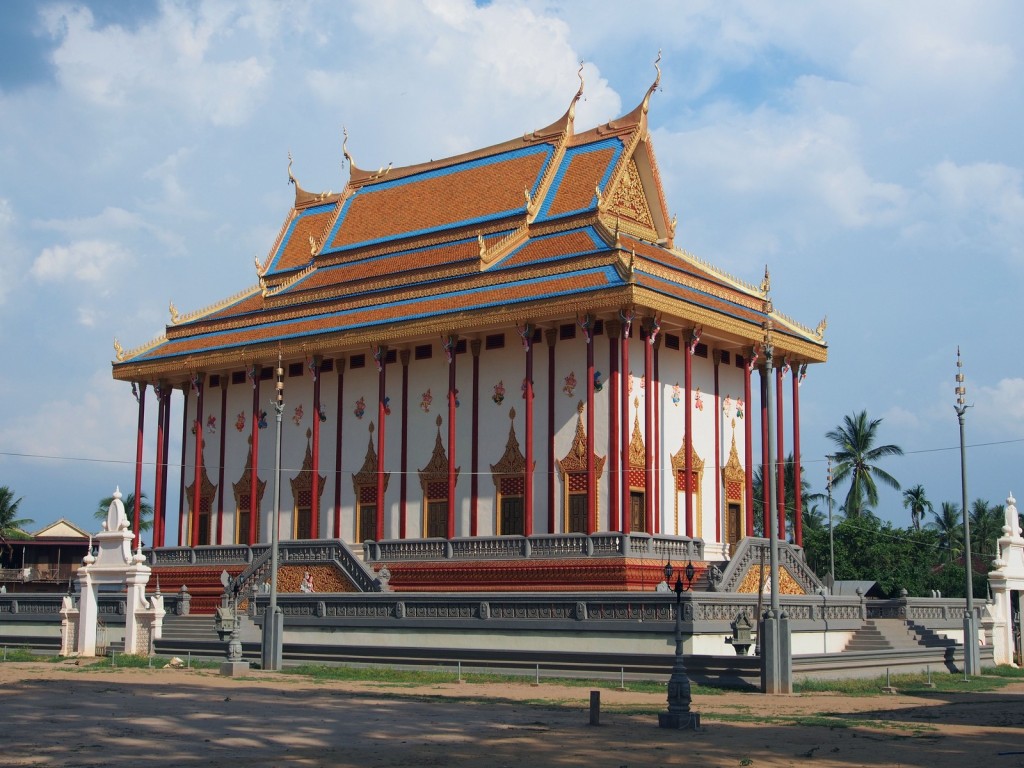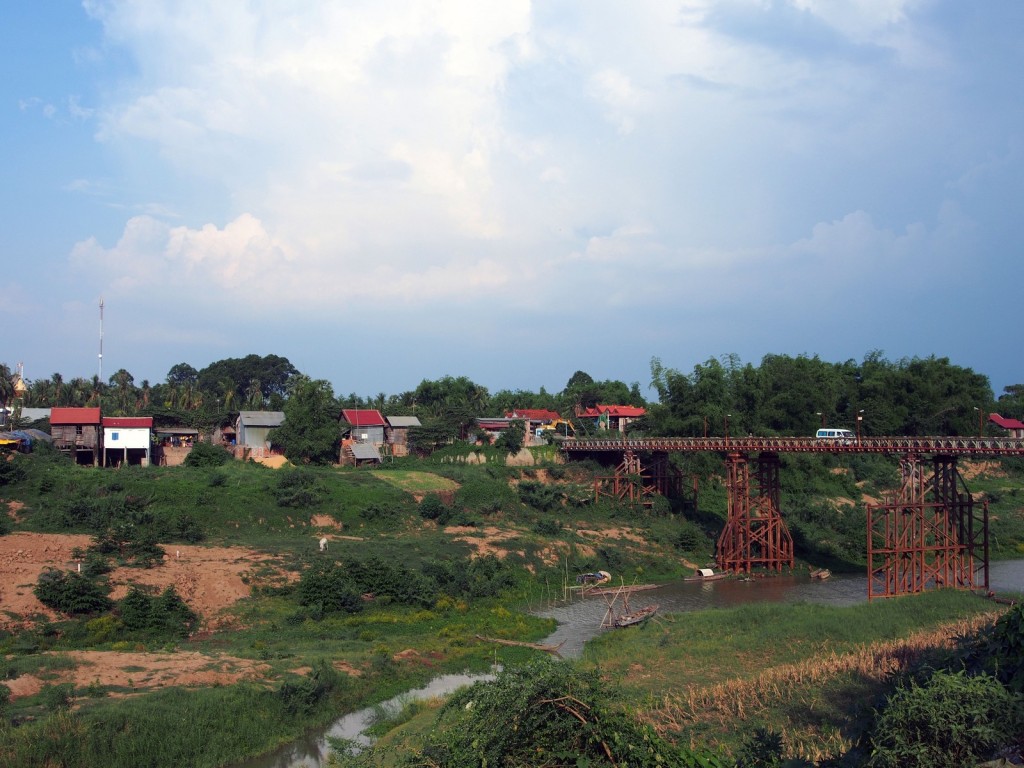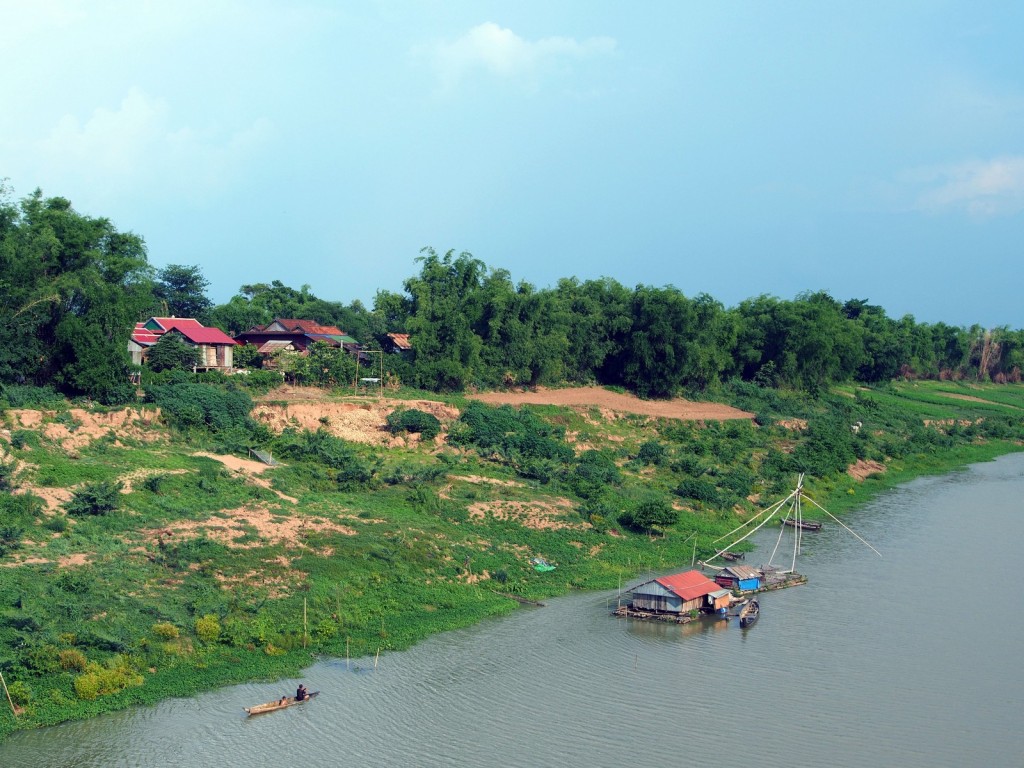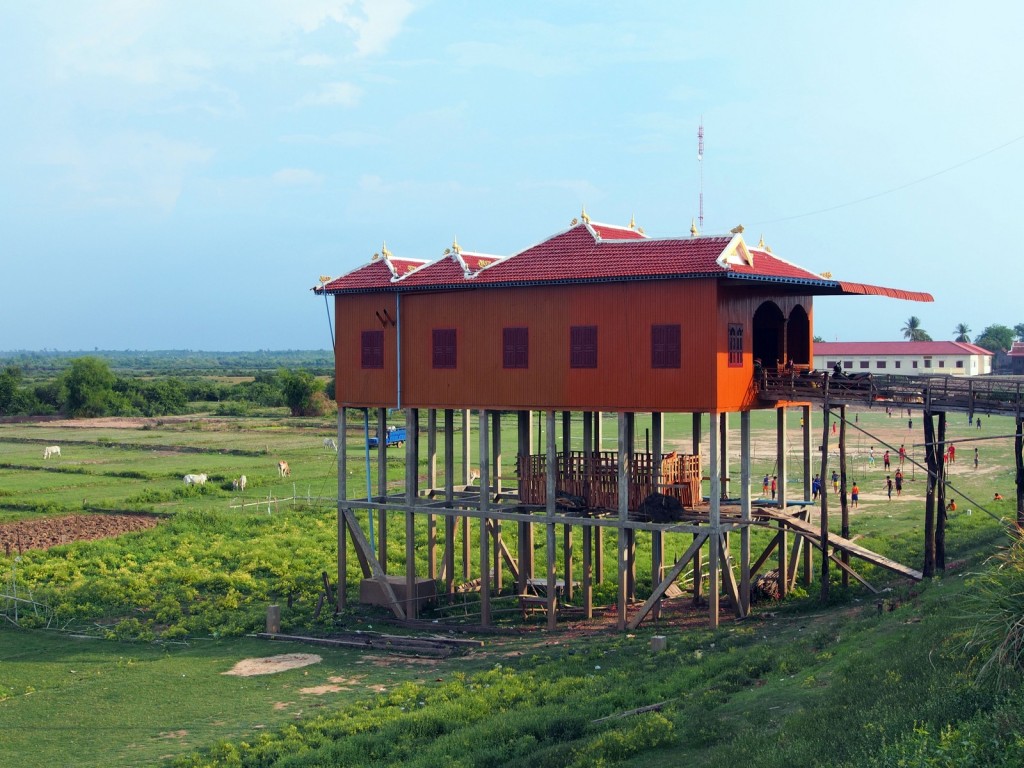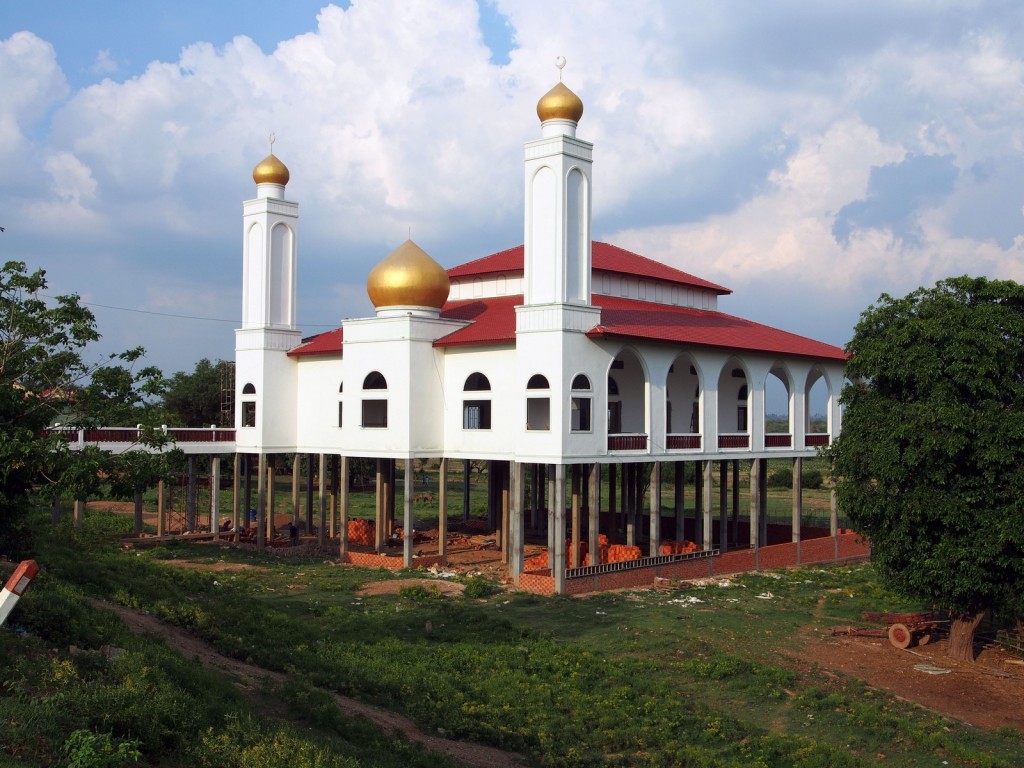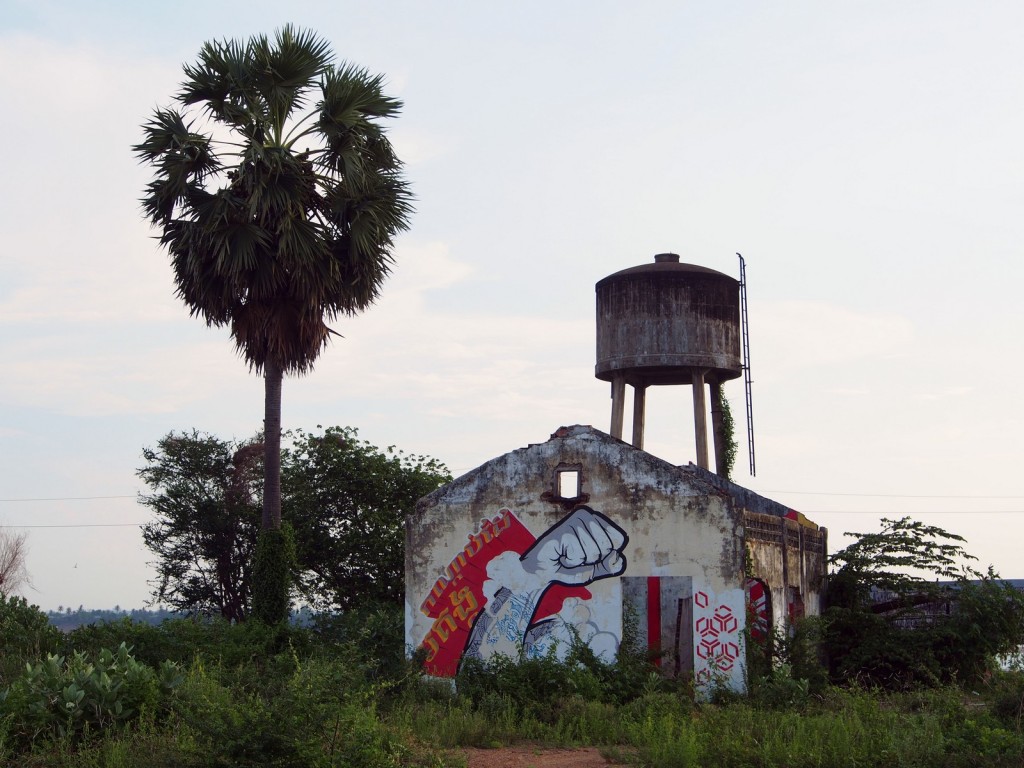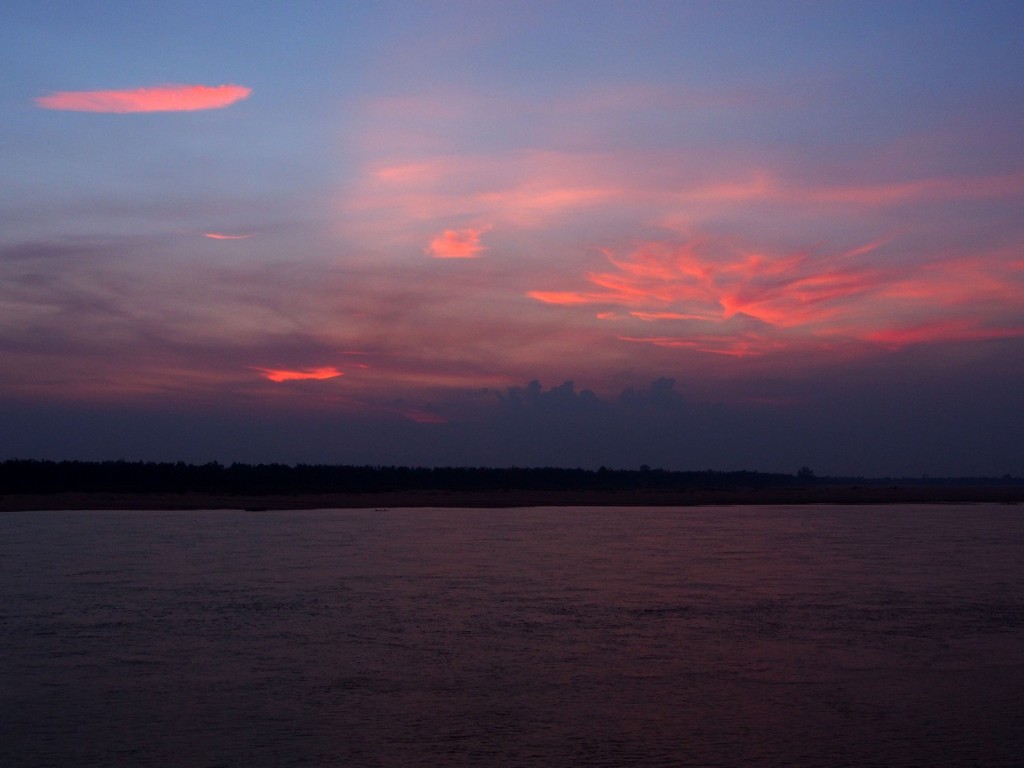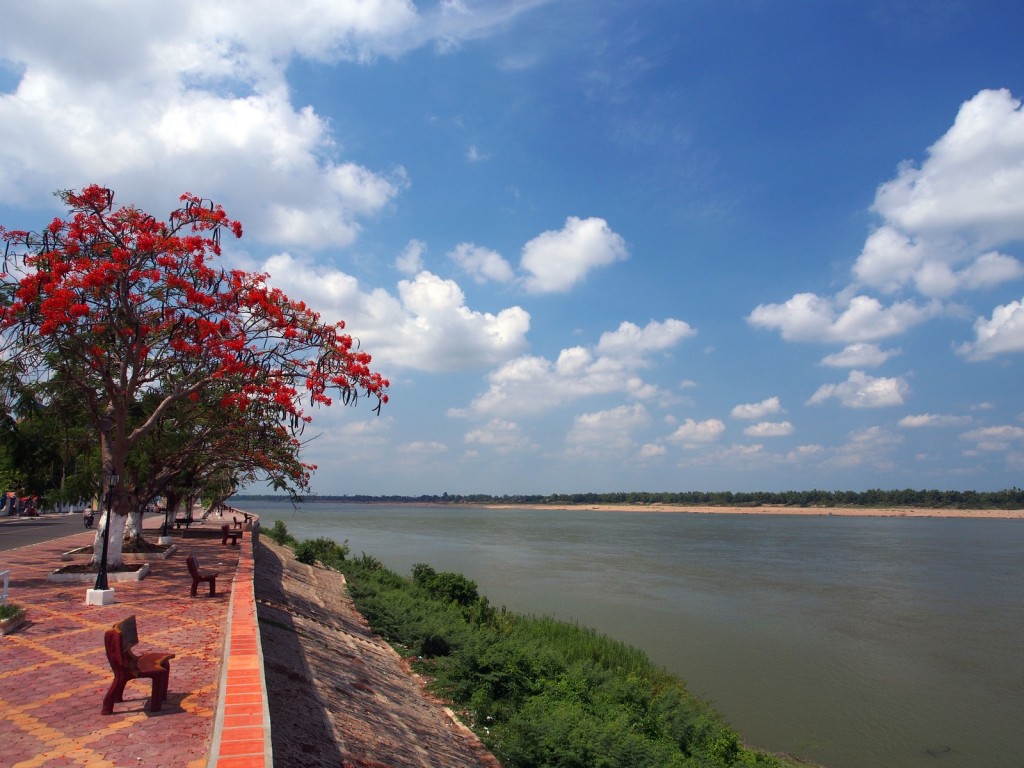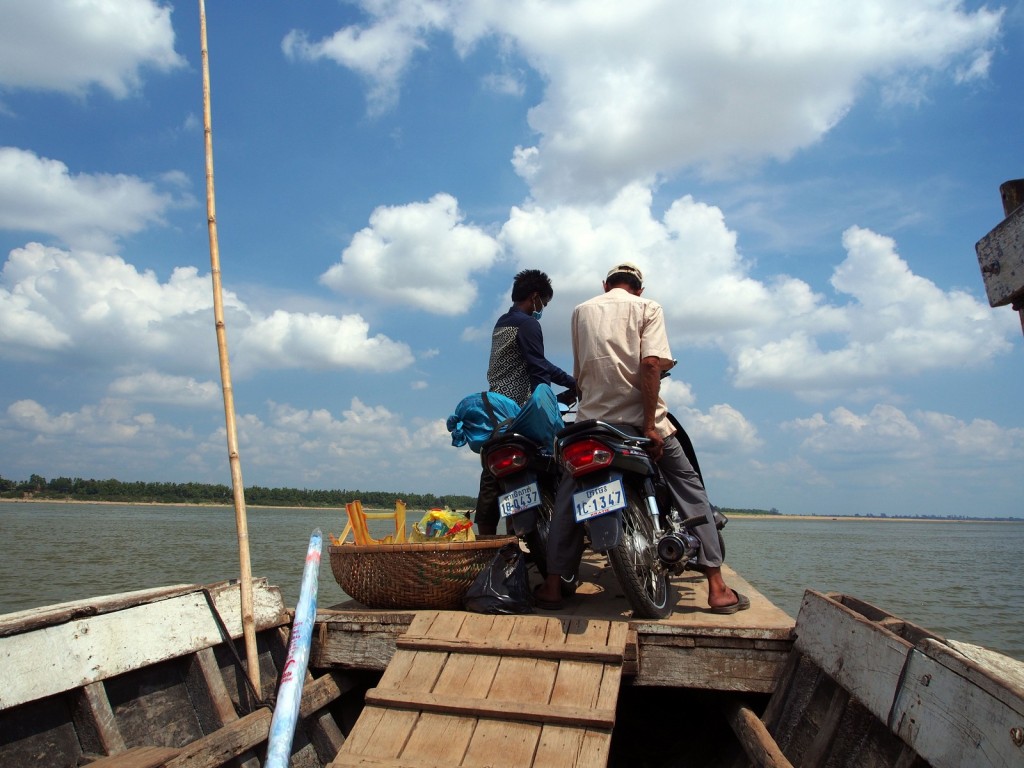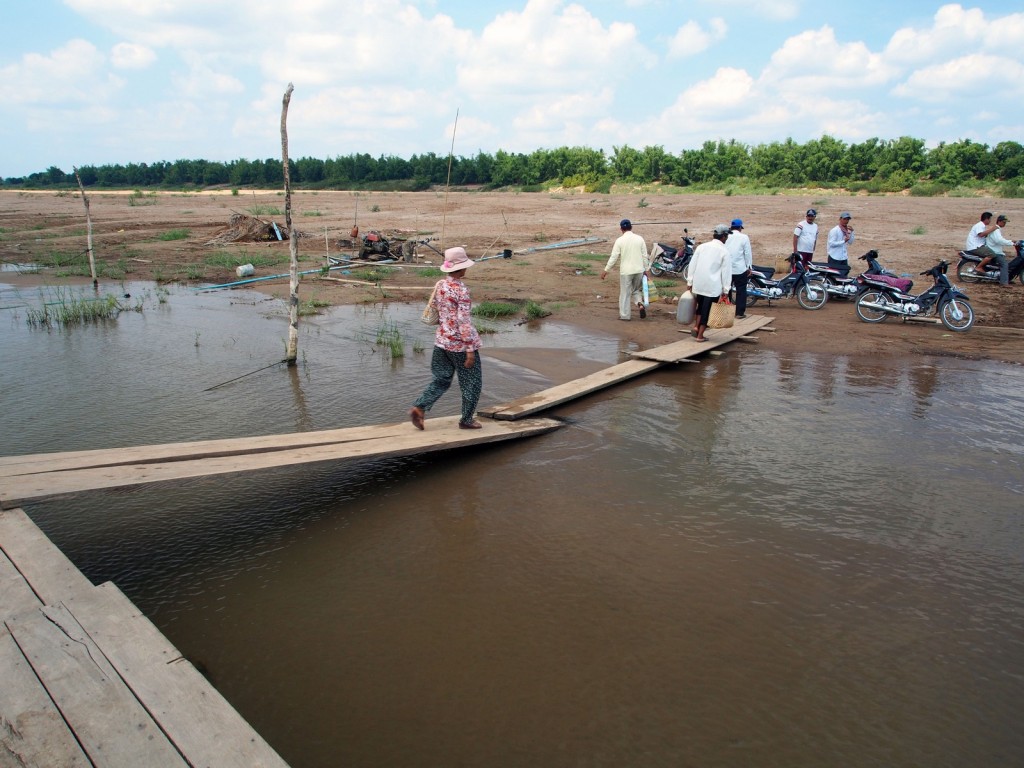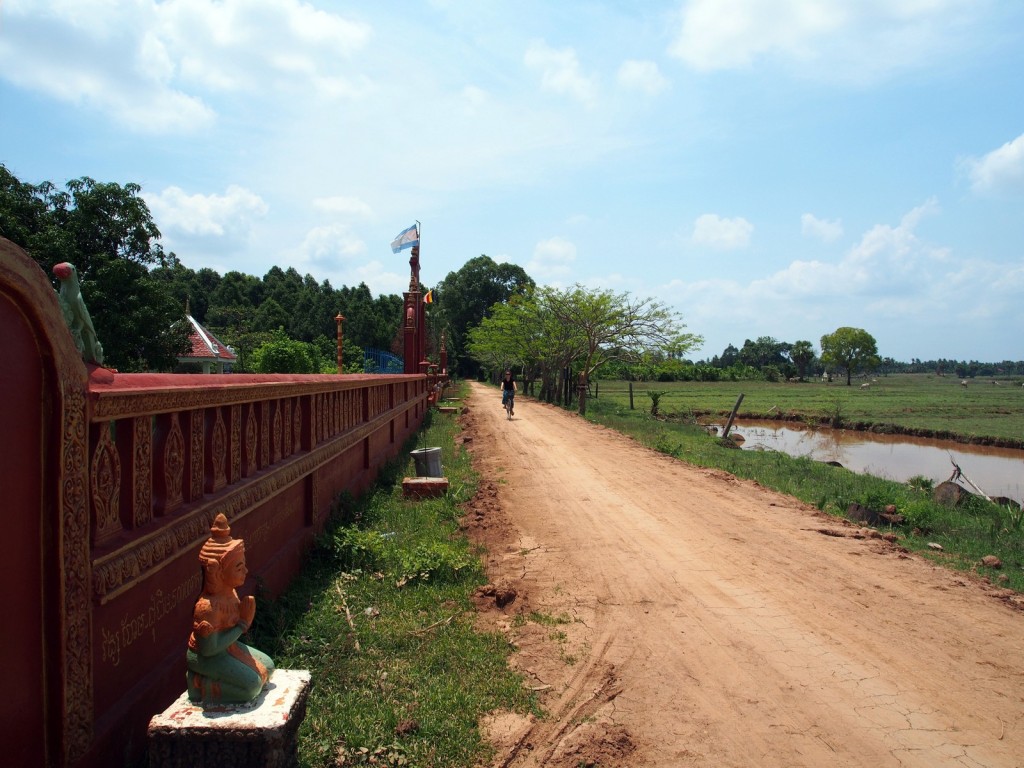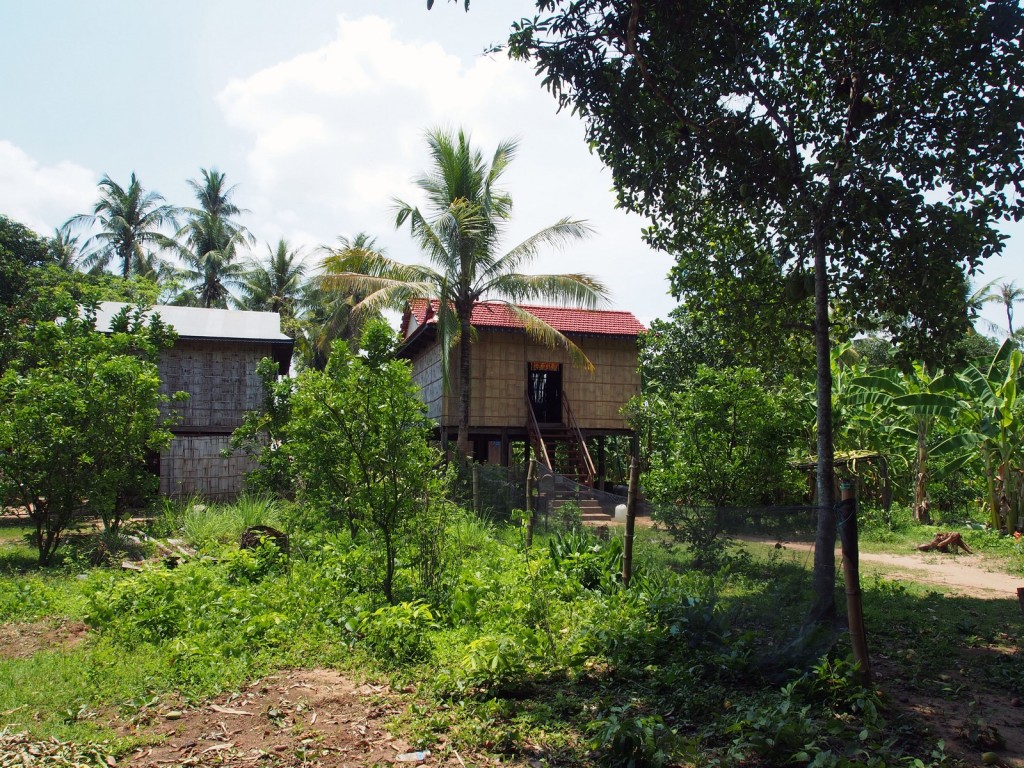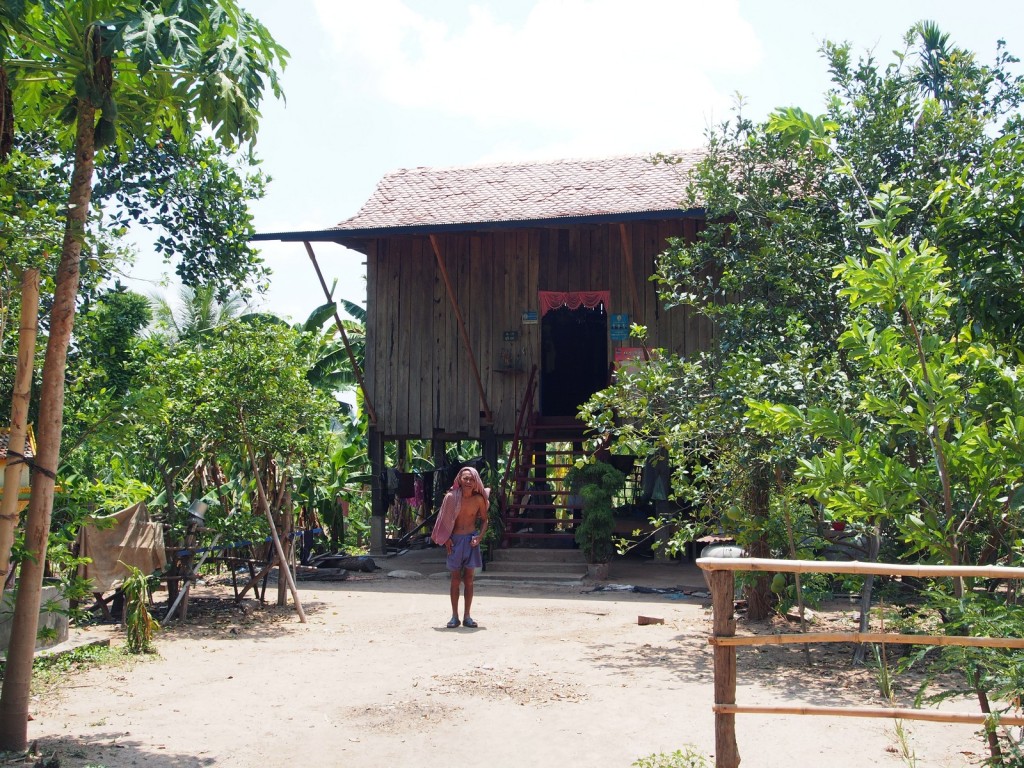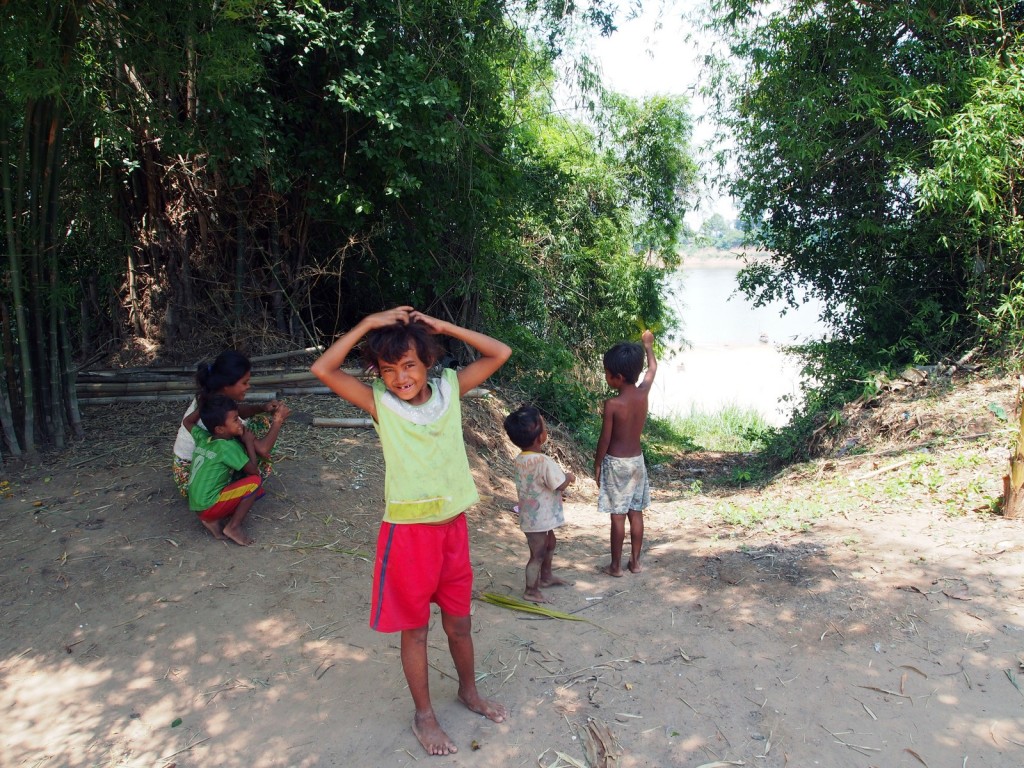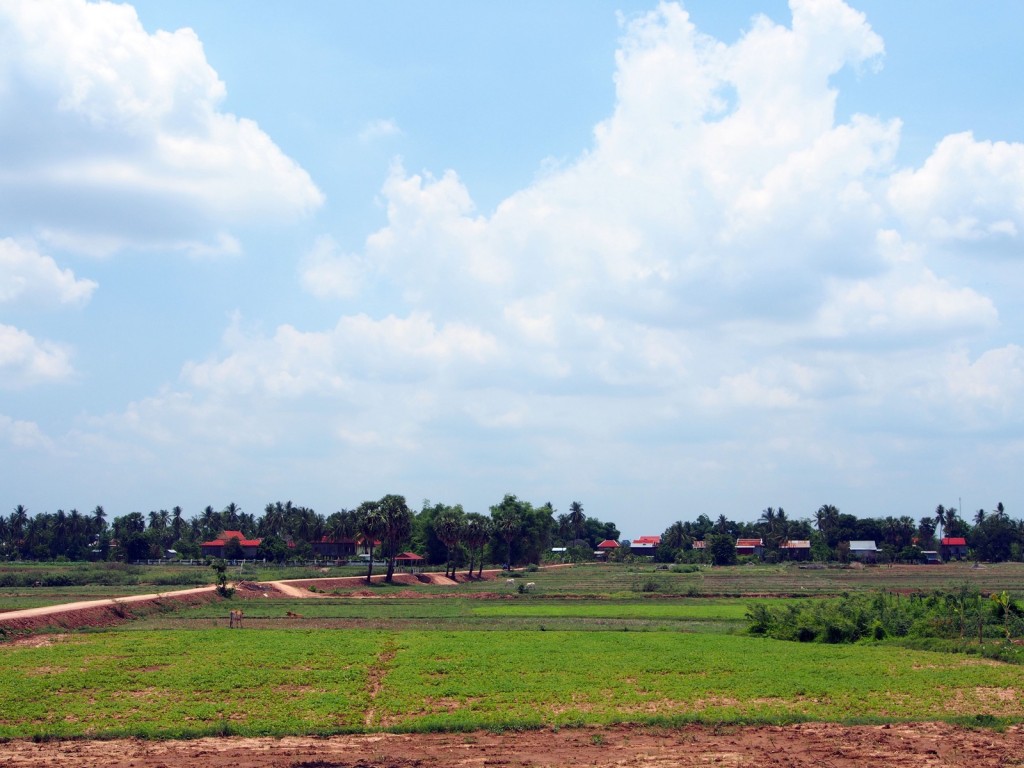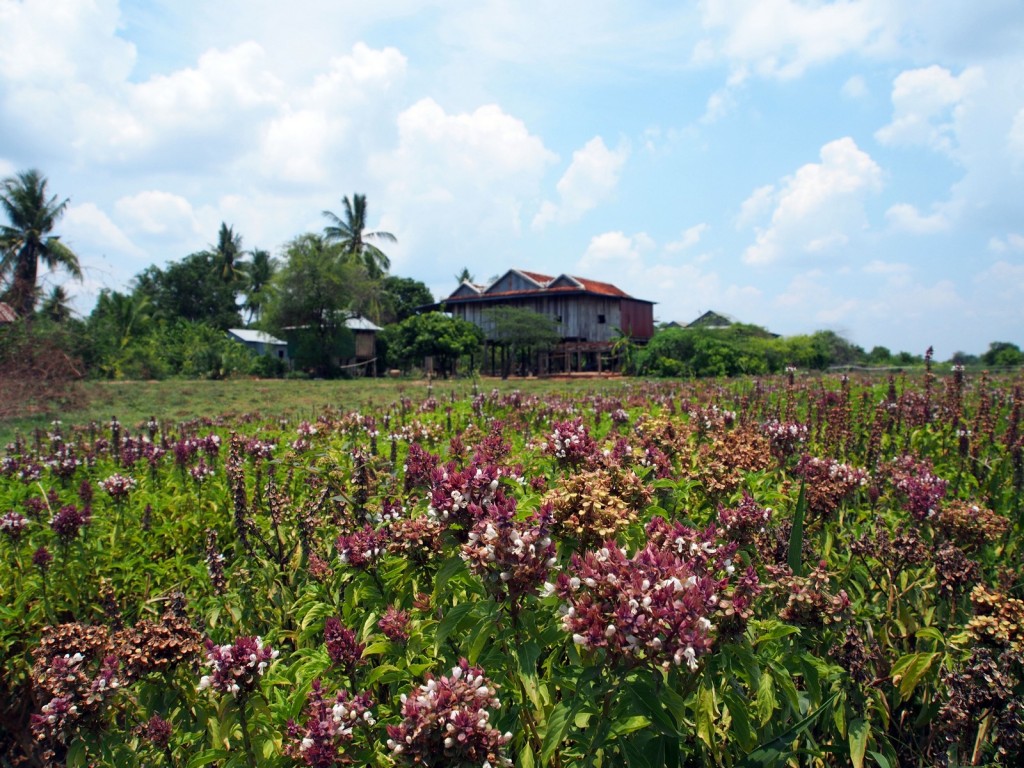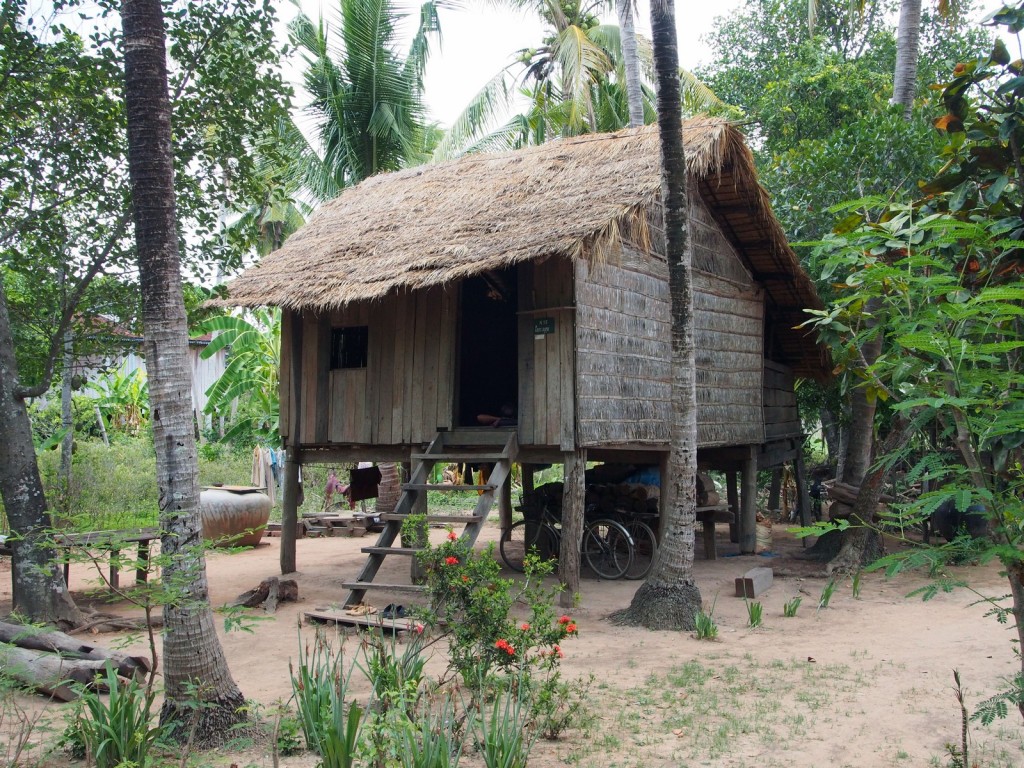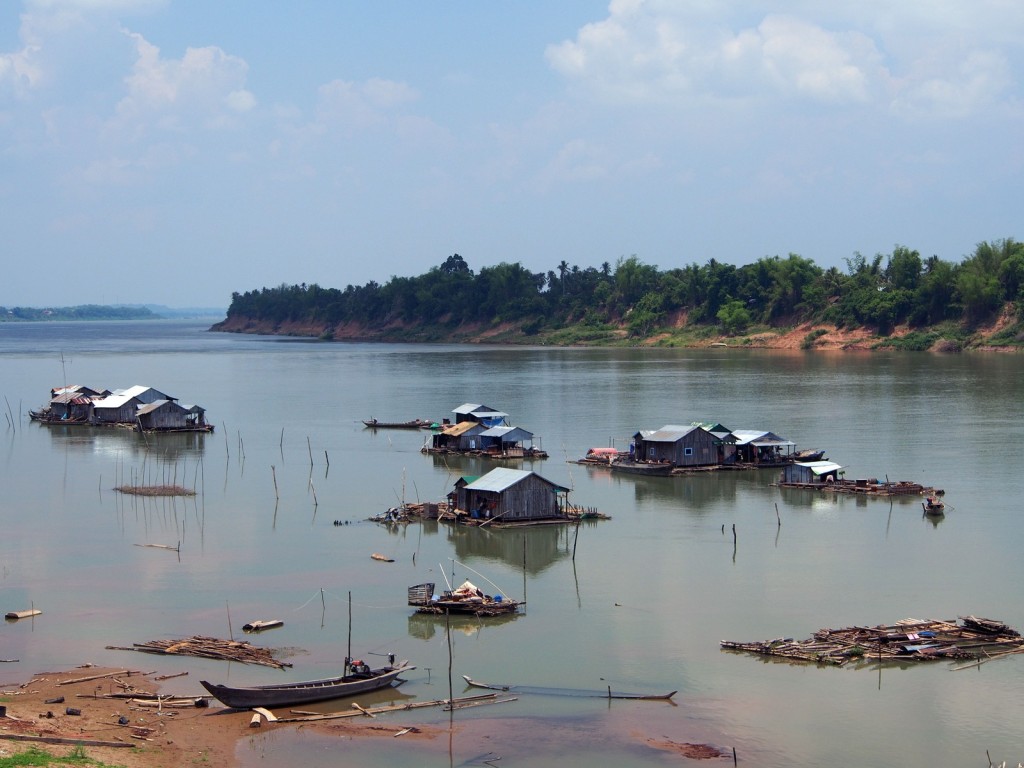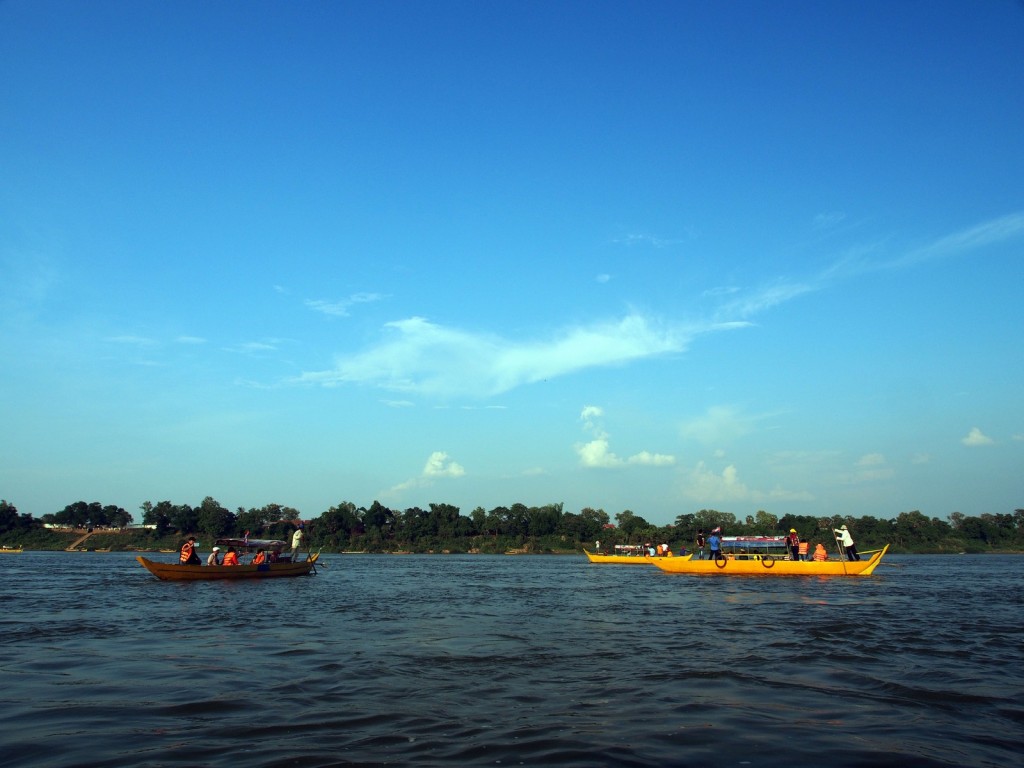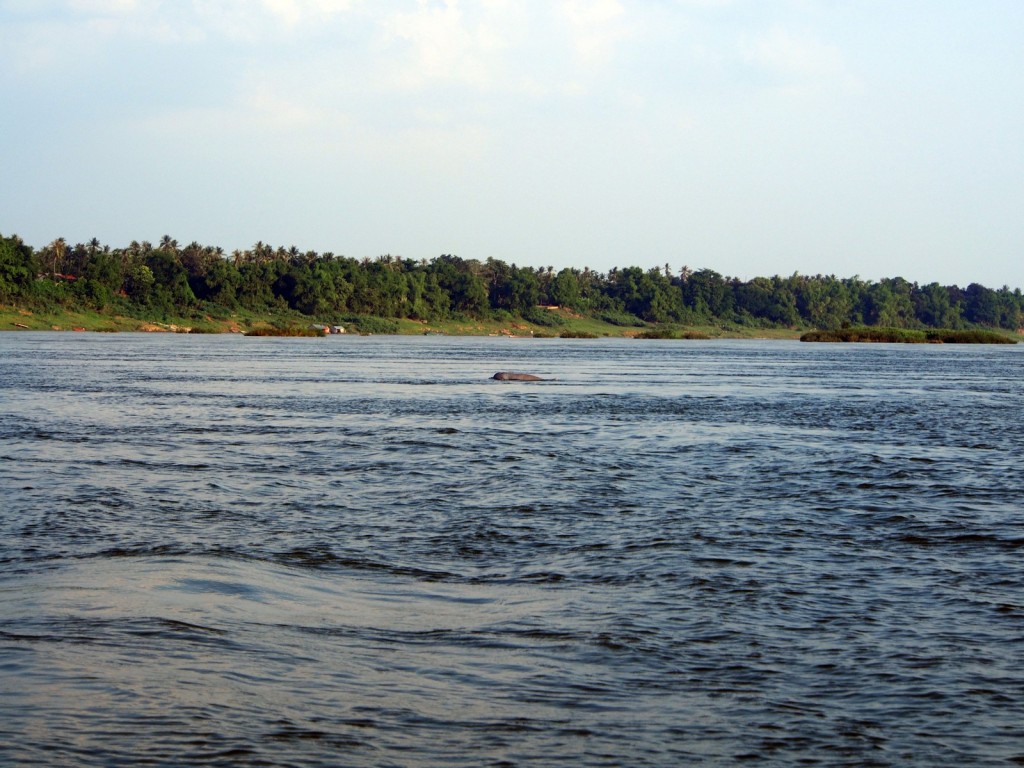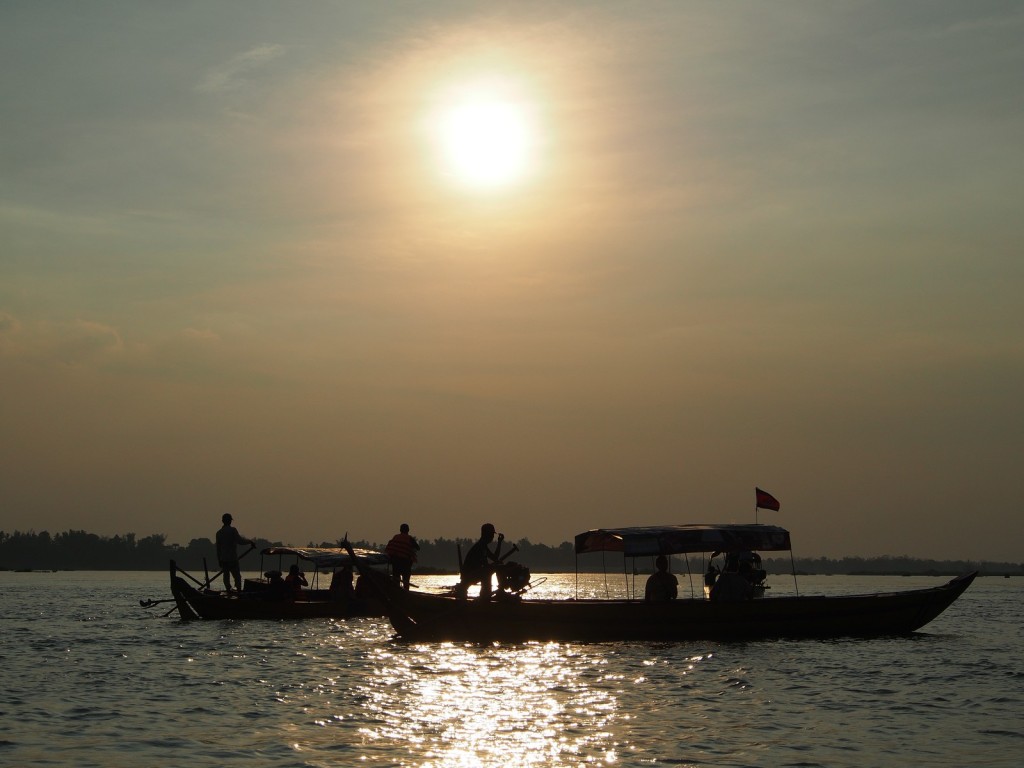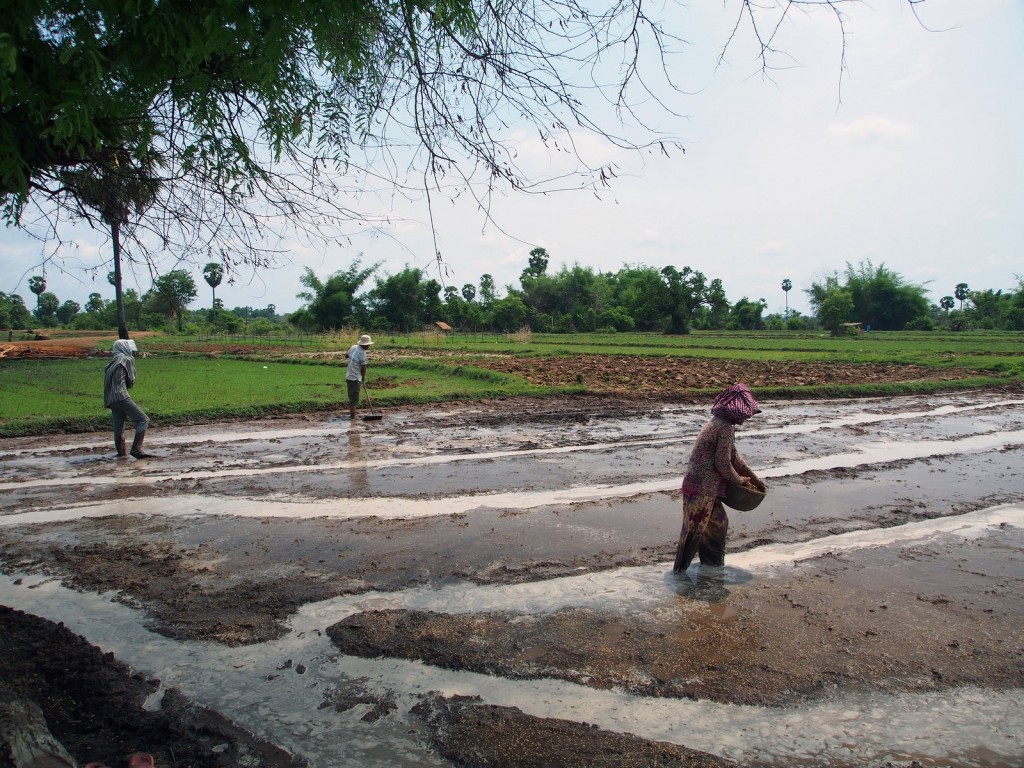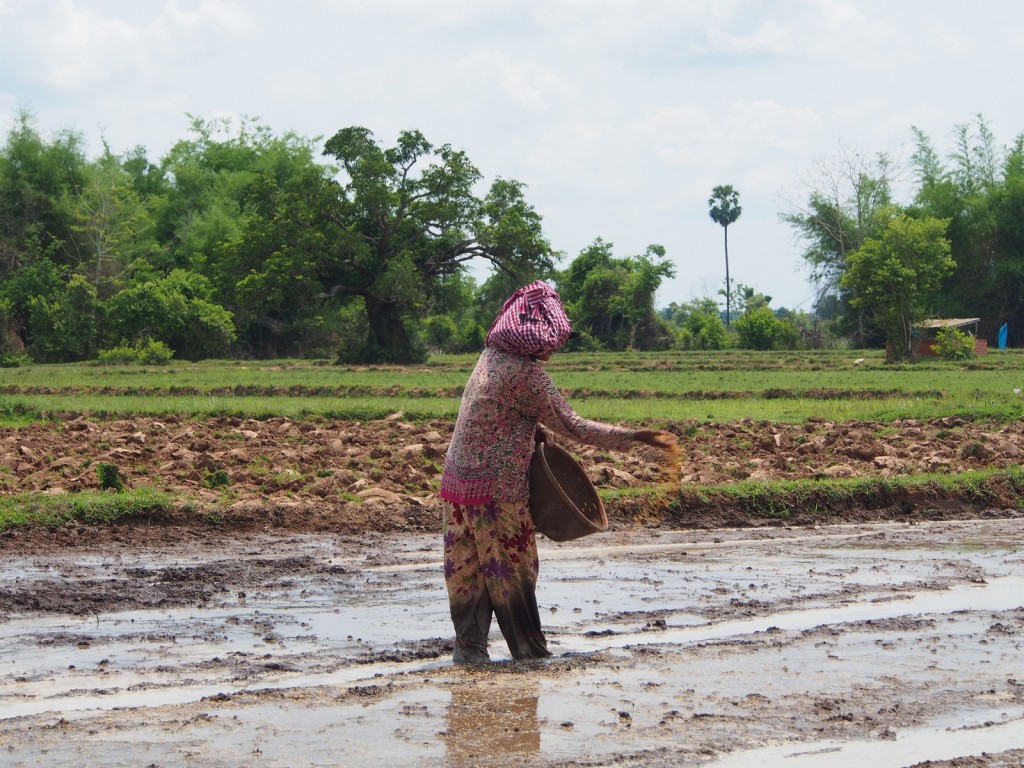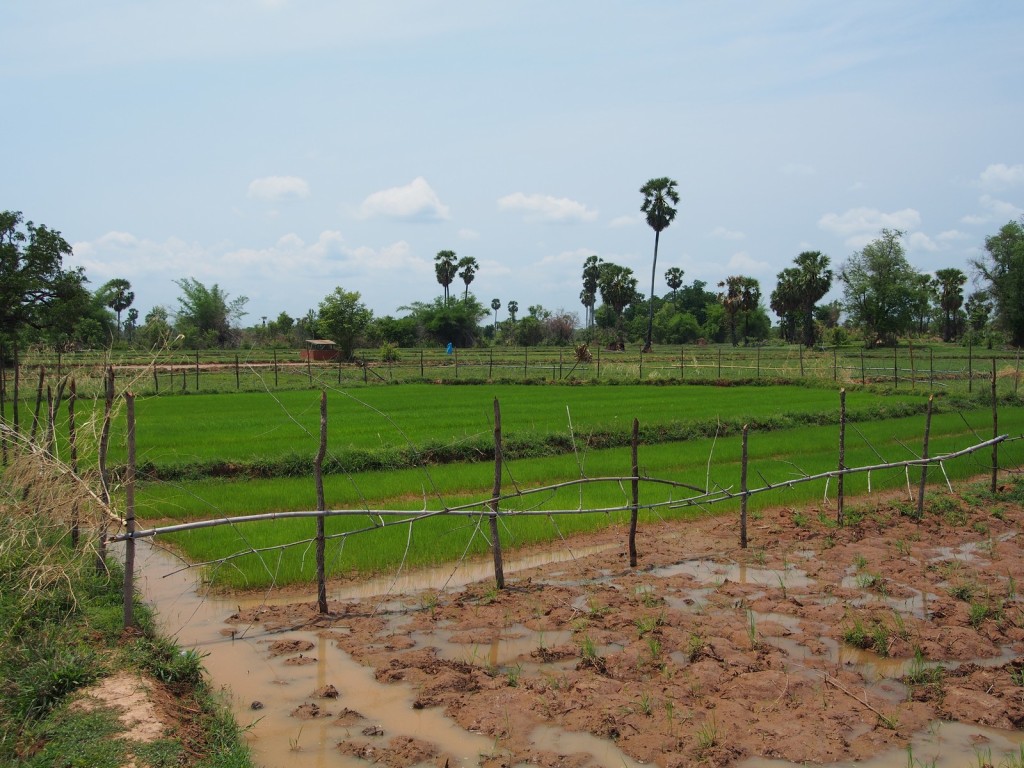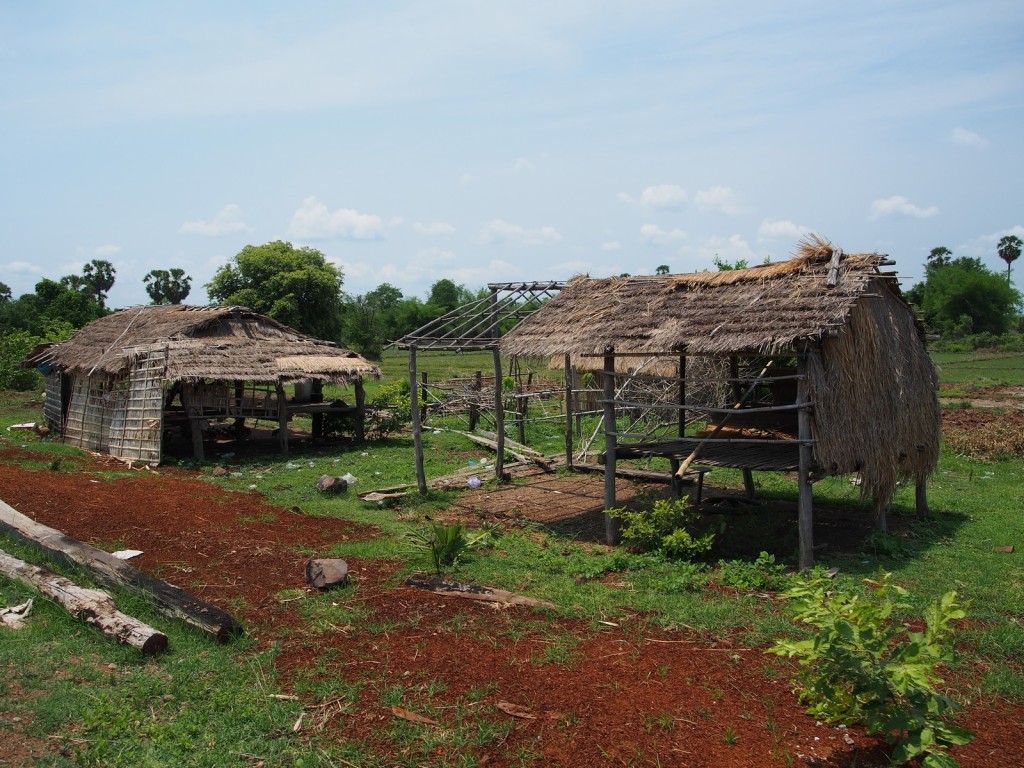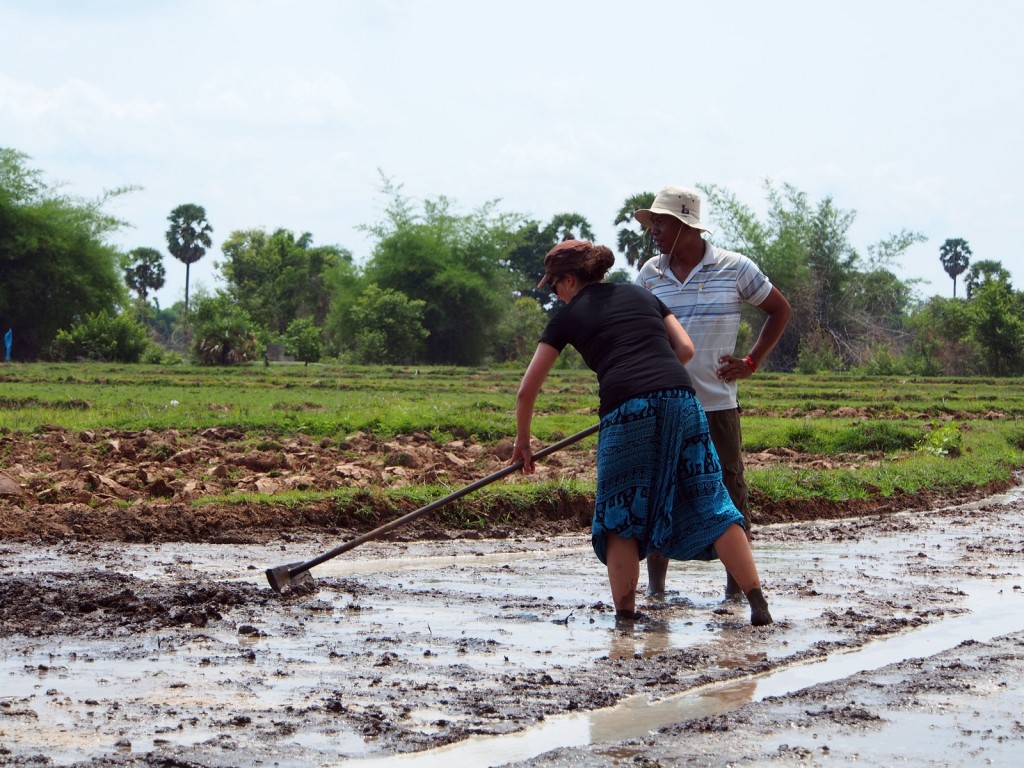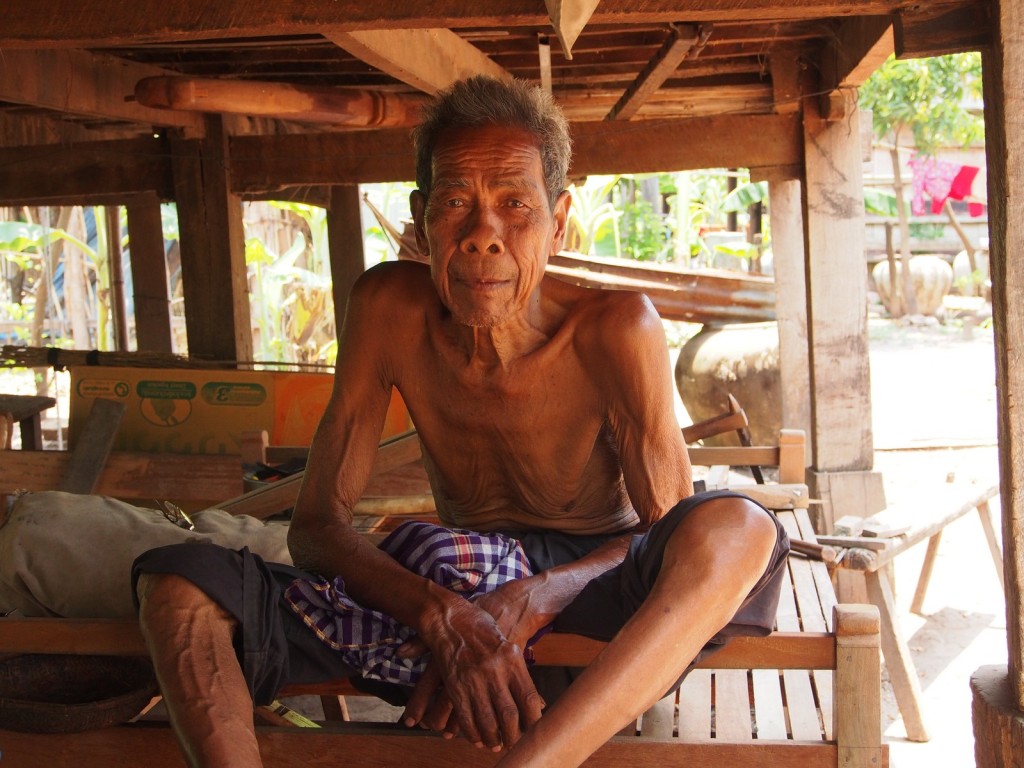Although we still didn’t have our passports back, we set off north on Friday morning, to explore the Mekong river and northern Cambodia. Our base would be the town of Kratie, some 250 kilometers north.
To get there, we had a quick blast up the (surprisingly decent) highway for the first 120km until the halfway town of Kampung Cham, where the highway crosses the river with a vast bridge.
From here we turned off on to a small side road that ran parallel to the river, through all the small villages – this is what we want to see of the places we visit, not just the edges of the highways.
The Cham people, the Muslim minority group in Cambodia, live in this area. All the houses are built on stilts to avoid flooding when the Mekong rises up to 5 metres during the monsoon.
After around 30km the road ends, and you have to cross the river on a local ferry. We were the major attraction on the boat, and probably the only foreigners they’ve seen for a while.
Once safely deposited on the far shore we followed the tiny road (alternately a single lane of rough bitumen and graded dirt) through endless tiny villages lining the river bank.
Even the mosque is on stilts.
Pulling in to Kratie for the night, we found a lovely boardwalk along the riverfront, most likely built by the colonial French. We sat and watched the sun set.
The next morning we walked down and took a tiny longtail boat across to the tiny isle of Koh Trong, stranded in the middle of the Mekong. Here we hired a couple of rusty old pushbikes from the local community tourism initiative and cycled our way through the peaceful village. Here, more than anywhere, was the epitome of the Cambodian spirit – as people smiled and waved happily at the tourists passing by. 25 cents for the boat each way and a dollar to hire the bikes makes for a cheap but memorable day out.
There was also a floating village moored just offshore.
That afternoon we headed north to the tiny town of Kampi, known as the best place to see the critically endangered Irrawaddy dolphin. Teaming up with other people, you charter a local boat to take you out on the river and try to get a picture – a very difficult task!
The next day we took a local guide to get out into the local villages and see the normal pattern of life – mostly agricultural work.
Ghighi tried her hand at preparing the mud to plant rice.
Our guide, Soda, also took us to meet his family – including his grandparents, 97 and 98 years old and still going strong: his grandfather still makes furniture under the house.
The next day was a long, boring run back to Phnom Penh, to pick up our passports from the Myanmar embassy, and return to Kratie – almost 500km. The following day, we continued further north and crossed the border into Laos. Plenty of small “processing fees” of $1-2 USD to get things moving, on both sides of the border, and it took a lot of charades and a few phone calls to get the Laotian customs guy to issue us our temporary import documents – Laos doesn’t deal with the carnet, and initially he just waved us through.

